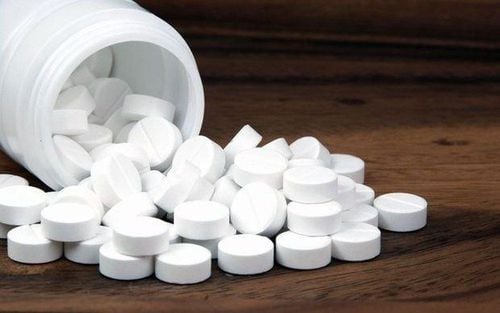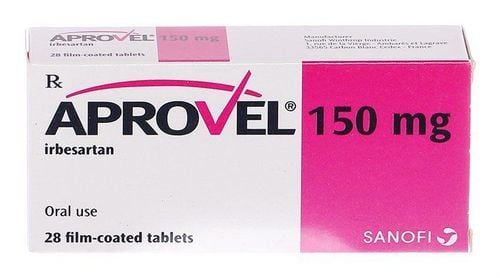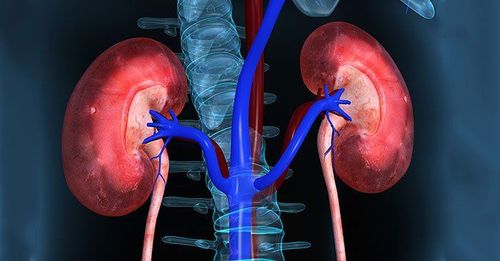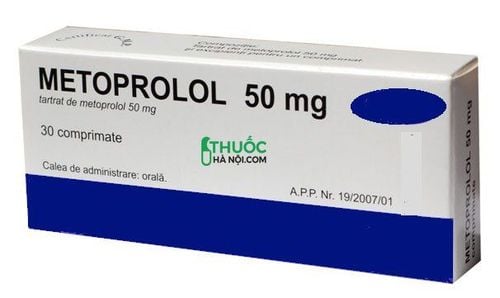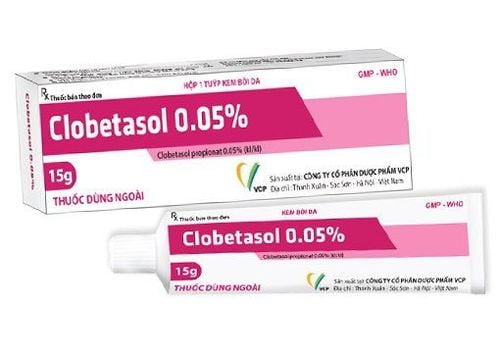This is an automatically translated article.
Hyperkalemia is defined when the blood potassium concentration exceeds 5 mmol/l (normal value is 3.5-5 mmol/l). This is a common disease and has a high mortality rate if not treated promptly.
1. Blood potassium level
Potassium is the most abundant positive ion in the human body, concentrated mainly in the intracellular space. It has an important role in the conduction of nerve impulses through action potentials.
The action potential of the cell depends on the difference in potassium concentration between the intracellular and extracellular, so the concentration of potassium in the blood must be tightly controlled. In addition, potassium is an important component of the neuromuscular transmission system, even a small change in potassium concentration can have a large effect on the body's activities.
Hyperkalemia is when the blood potassium level exceeds 5 mmol/l (normal value is 3.5 -5 mmol/l).
2. Diagnosis of hyperkalemia
Hyperkalemia often has no specific symptoms. In some cases, some neuromuscular symptoms such as fatigue, asthenia, palpitations, paralysis, and paresthesias were present. Chest pain may also be present, caused by myocardial hypoperfusion or tachycardia, which may progress to cardiac arrest.
Therefore, it is not enough to diagnose hyperkalemia based on clinical symptoms alone. Instead, at-risk patients need testing and close monitoring to detect hyperkalemia.
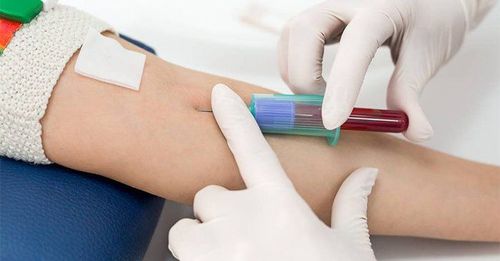
Bệnh nhân có nguy cơ cần làm xét nghiệm và theo dõi kỹ để phát hiện tăng kali máu
2.1. Electrolyte testing Hyperkalemia is diagnosed by electrolyte testing . Blood potassium concentration >5 mmol/l, if increased >6.5 mmol/l, life-threatening. However, there is no strong correlation between the degree of hyperkalemia and changes in the electrocardiogram and it depends on the individual patient. When serum potassium rises slowly, there are less electrocardiographic changes than in acute hyperkalemia and are associated with hyponatremia, hypocalcemia, and acidosis.
Electrocardiographic changes of hyperkalemia have 4 stages:
Stage 1 (potassium 5.5-6 mmol/l): Slow heart rate, high T waves (high T >2⁄3 R waves from V3-V6 ), pointed, narrow bottom and symmetrical. Stage 2 (potassium 6-7 mmol/l): Long PR interval, wide QRS, atrioventricular conduction disturbances. Stage 3 (potassium 7-7.5 mmol/l); Decrease in amplitude of P wave and R wave, increase in amplitude of S wave. Stage 4 (potassium > 8 mmol/l): Electrocardiogram is sinusoidal because QRS continues to widen and mix with T wave, then fibrillation occurs. heart failure and asystole. Electrocardiogram changes can be very rapid, in just a few minutes.
3. Treatment of hyperkalemia
3.1.Attitude for initial management Hyperkalemia is a medical emergency, the patient can die quickly if not given emergency and timely treatment. Therefore, when there is hyperkalemia associated with changes in the electrocardiogram or clinical symptoms, it is necessary to immediately take measures to reduce the serum potassium concentration rapidly.When the test has hyperkalemia but no cause is found and there are no symptoms (clinical, electrocardiogram), it is necessary to pay attention to the cases of pseudohyperkalemia due to:
Ischemia in the blood sampling area: Garot too tight and elongated. Hemolysis in vitro: Due to the technique of drawing blood (using a fine needle), leaving the blood tube for too long or during the transportation of the blood tube causes the rupture of red blood cells. Leukocytosis (>50 G/L) or thrombocytosis (>1000 G/L) causes the blood sample to clot and release potassium from the cells. At that time, it is necessary to immediately take a blood tube for testing to check the blood potassium level before proceeding with treatment measures.
When arterial blood is a rapid test that shows the concentration of potassium in the blood as well as acid-base, which helps in rapid diagnosis and appropriate management of hyperkalemia.
Severe cases, high blood potassium, the patient needs to be immobilized at the bed, have a monitor to monitor the electrocardiogram, sPO2, place an intravenous line and prepare drugs and emergency equipment for hyperkalemia, prepare a machine electric shock (if any).
3.2.Treatment of hyperkalemia 3.2.1 Principles of blood potassium 5-5.5 mmol/l: Adjust diet, limit drugs and preparations with potassium. Blood potassium 5.5-6 mmol/l: Adjust diet, limit drugs and preparations with potassium, increase potassium excretion through the digestive tract and urine.

Điều chỉnh chế độ ăn, hạn chế thuốc và chế phẩm có kali
Blood potassium 6-6.5 mmol/l: Use drugs to lower blood potassium and prepare for emergency dialysis. Blood potassium > 6.5 mmol/l: Indication of emergency dialysis as soon as possible. 3.2.2 Specific treatment Do not eat foods containing a lot of potassium such as: bananas, sapodilla, sour citrus, dried fruits, dried foods, pickled fruits, canned foods... Do not use potassium and Medicinal preparations, infusions containing potassium. Filter out necrotic foci, pus foci, treat infection foci. When gastrointestinal bleeding is seen: It is necessary to quickly remove blood from the gastrointestinal tract (laxative). Drugs to treat hypokalemia
a) Calcium preparations
Mechanism: The drug has no effect on hypokalemia but has an antagonistic effect on the effect of potassium on the heart and neuromuscular by stabilizing cell membranes, Therefore, it should be used in combination with other potassium-lowering drugs. Indications: Hyperkalemia accompanied by cardiac electrical disturbances (bradycardia, dilated QRS...) Preparation: Calcium chloride or calcium gluconate 10% ampoules (5ml) = 0.5g. Usage: 0.5-1g each time, slow intravenous injection or intravenous infusion phase for 2-5 minutes (can use electric syringe). The central vein rather than the peripheral route should be used to avoid the risk of necrosis due to drug escape from the lumen. After injection, the drug has an immediate effect, the effect lasts 30-60 minutes, so it can be injected every 30 minutes, but can be repeated after 5-10 minutes if there is no ECG change. Should not be used if the patient is taking digitalis. Note: If calcium injection is not effective, severe arrhythmia (ventricular fibrillation) affecting hemodynamics needs to be reconsidered for the possibility of ventricular defibrillation.
b) Drugs that increase the distribution of potassium from the outside into the cells
Insulin
Insulin activates the Na-K-ATPase pump, which increases the movement of potassium from the extracellular fluid into the cells. Mix 10 units of rapid insulin with 50g of glucose intravenously over 60 minutes (one unit of insulin is required for every 3-5g of glucose and usually a minimum of 50-100g of glucose is required). The drug has a rapid effect after 15 minutes, lasts for 6-8 hours, and reduces potassium by 1 mEq/L. Usually a glucose solution of 20-30% is used, not a solution that is too hypertonic (40-50%) due to increased osmolarity and loss of intracellular water, which can cause potassium to move from the cells to increase blood potassium before the onset of symptoms. hypokalemia effect. Attention should be paid to patients with hyperglycemia prior to infusion, and monitor for hyperglycemia or hypoglycemia during and after infusion. The glycemic status may reduce the hypokalaemic effect of insulin. Beta-Sympathomimetic Drug Albuterol
Drug that works to activate the Na-K-ATPase pump. Nebulize 10-20 mg or mix 0.5mg/100ml of 5% glucose intravenously. Effects after 10-15 minutes, lasting 3-6 hours, the effect of reducing 1-1.5 mEq/L. It is necessary to monitor the side effects of increased heart rate and blood pressure during the use of the drug. Alkaline blood
The drug is rarely used because of its weak and slow hypokalemia effect (after 4 hours) and weak effect if there is no metabolic acidosis due to stagnation of inorganic acids. Preparations; Sodium bicarbonate solution 4.2%- 250ml bottles and 1.4%- 500ml bottles; 8.4%-5ml ampoules need to use 50ml each time or mix in 10% glucose solution. Dosage 1mEq/kg, 2-4 mEq/minute intravenous infusion until blood bicarbonate levels return to normal. Monitor volume overload due to fluid infusion and sodium retention, especially in patients with renal failure with associated oliguria, edema, and hypertension, as side effects of hypocalcaemia. c) Increased urinary potassium excretion
Loop diuretic Furosemide has a fairly rapid effect (after 30-60 minutes) and lasts for 4-6 hours. Usually start furosemide 40-80 mg. The drug is effective when the urine output is > 500 ml/24 hours.
Choice of drug and dose depends on glomerular filtration rate and clinical response. Thiazide diuretics are weakly effective in severe renal impairment, so furosemide diuretics should be preferred. Note that volume-depleted patients require volume resuscitation prior to diuretic therapy.
d) Increase excretion of potassium through feces
Use of ion exchange resins (resonium): Sodium polystyrene sulfonate (Resin calcio, Kayexalat, Resonium A), pack 15g. The essence of the drug is that sodium-binding plastic particles, when entering the intestinal mucosa, especially in the colon, will release sodium ions and irreversibly bind to potassium and be excreted in the feces in the form of potassium polystyrene sulfonate.
+ Time to start working after 1-2 hours, lasting 4-6 hours, reducing potassium 0.5-1.0 mEq/L.
+ Dosage 15-30 g / time, 3-4 hours / time. If the patient is unable to drink, the dose can be mixed with an enema of 50g + sorbitol.
+ Be careful when using with sorbitol for patients after surgery due to the risk of causing intestinal necrosis of the drug. Monitor blood sodium concentration and volume overload, increase edema with prolonged use due to increased sodium reabsorption through the intestinal mucosa, especially in patients with heart failure and renal failure.
- Calcium polystyrene sulfonate (Kalimate, pack of 5 g) is a calcium-binding plastic product that limits edema, hypertension and worsening heart failure due to sodium stagnation. Doses of 15-30g/day can reduce blood potassium by 1 mEq/L. If constipation can be used with Lactulose (Duphalac).
3.3.3 Emergency dialysis

Khi kali máu>6,5 mmol/l bệnh nhân sẽ được xem xét chỉ định lọc máu
Indicated when serum potassium > 6.5 mmol/l or hyperkalemia accompanied by electrocardiographic changes stage 2 or more or hyperkalemia unresponsive to other medical treatments.
However, the indication for emergency dialysis depends on the presence or absence of other combined indications such as uremia syndrome, volume overload, anuria, hyponatremia, and acidosis. heavy.
Care should be taken to continue using other hypokalemic measures while the patient awaits dialysis. Monitor potassium levels after dialysis as this may cause excessive hypokalemia or return of hyperkalemia.
Vinmec International General Hospital is one of the hospitals that not only ensures professional quality with a team of leading medical doctors, modern equipment and technology, but also stands out for its examination and consultation services. comprehensive and professional medical consultation and treatment; civilized, polite, safe and sterile medical examination and treatment space. Customers when choosing to perform tests here can be completely assured of the accuracy of test results. In addition, customers will be examined with a specialist to determine the risk of disease and have a scientific treatment direction.
Please dial HOTLINE for more information or register for an appointment HERE. Download MyVinmec app to make appointments faster and to manage your bookings easily.




